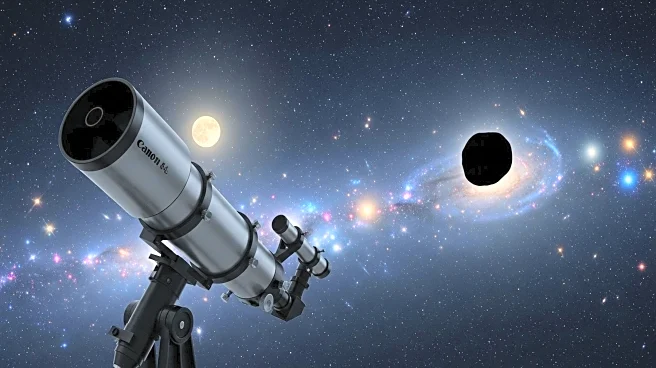What's Happening?
NASA's Deep Space Network's Goldstone Solar System Radar captured a series of 28 images of asteroid 1997 QK1 on August 21, 2025. This asteroid, spanning over 660 feet wide, made its closest approach to Earth in over 350 years, passing at a distance of 1.9 million miles. The flyby allowed astronomers to study its size, rotation, surface, and shape, revealing it as a 'contact binary' with a peanut shape. Despite being classified as potentially hazardous, NASA confirms it poses no immediate threat to Earth. The asteroid's next closest approach will be in 2039, at a distance of 1.5 million miles.
Why It's Important?
The observation of asteroid 1997 QK1 is significant for planetary defense strategies. Understanding the behavior and characteristics of such asteroids is crucial for developing effective deflection plans to prevent potential impacts. Although the likelihood of an asteroid impact is rare, the consequences can be catastrophic, as evidenced by past events like the 2013 Chelyabinsk meteor explosion. NASA's efforts, such as the DART mission, demonstrate the feasibility of altering an asteroid's trajectory, highlighting the importance of continued research and preparedness in planetary defense.
What's Next?
NASA and other space agencies will continue to monitor asteroid 1997 QK1 and similar near-Earth objects. The data collected from these observations will inform future missions and strategies to mitigate potential asteroid threats. As the asteroid is expected to come closer in 2039, ongoing surveillance and research will be essential to ensure Earth's safety. Additionally, advancements in technology and international collaboration will play a vital role in enhancing planetary defense capabilities.
Beyond the Headlines
The study of asteroid 1997 QK1 also contributes to our understanding of the solar system's formation and the dynamic processes that shape celestial bodies. The discovery of its contact binary structure, common among near-Earth asteroids, provides insights into the composition and evolution of these objects. This knowledge not only aids in planetary defense but also enriches our scientific comprehension of the universe.













